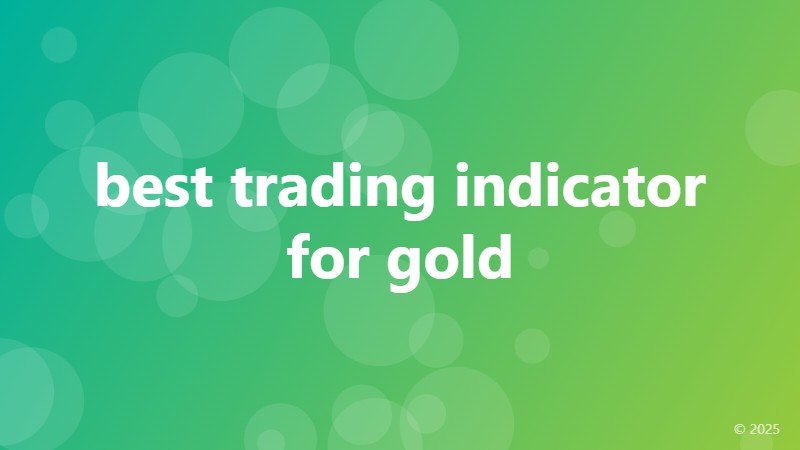best trading indicator for gold

Unlocking the Secrets of Gold Trading: Top Indicators to Watch
When it comes to trading gold, having the right indicators can make all the difference between profit and loss. With the gold market being highly volatile, it's essential to have a solid strategy in place to navigate the ups and downs. In this article, we'll delve into the best trading indicators for gold, helping you make informed decisions and maximize your returns.
The Importance of Technical Analysis in Gold Trading
Technical analysis is a crucial component of gold trading, allowing traders to identify patterns and trends that can inform their investment decisions. By analyzing charts and indicators, traders can gain a better understanding of market sentiment and make more accurate predictions about future price movements. When it comes to gold, technical analysis is particularly useful, as it helps traders to identify trends, spot reversals, and set stop-loss levels.
Top 5 Best Trading Indicators for Gold
So, what are the best trading indicators for gold? Here are our top 5 picks:
1. Relative Strength Index (RSI)
The RSI is a popular indicator that measures the speed and change of price movements. In the context of gold trading, the RSI can help traders identify overbought and oversold conditions, allowing them to make more informed buy and sell decisions. By setting the RSI to a 14-day period, traders can get a better sense of the gold market's short-term momentum.
2. Moving Averages
Moving averages are a simple yet effective way to identify trends in the gold market. By plotting the 50-day and 200-day moving averages on a chart, traders can get a sense of the gold price's short-term and long-term trends. This can help traders to identify potential buy and sell signals, as well as spot trend reversals.
3. Bollinger Bands
Bollinger Bands are a volatility indicator that can help traders to identify potential breakouts and trend reversals. By plotting the Bollinger Bands on a gold chart, traders can get a sense of the market's volatility and identify potential trading opportunities.
4. Stochastic Oscillator
The Stochastic Oscillator is a momentum indicator that compares the closing price of gold to its price range over a given period. This indicator can help traders to identify overbought and oversold conditions, as well as spot potential trend reversals.
5. Ichimoku Cloud
The Ichimoku Cloud is a comprehensive indicator that provides a detailed view of the gold market's trend, momentum, and volatility. By plotting the Ichimoku Cloud on a chart, traders can get a sense of the market's overall direction and identify potential trading opportunities.
Conclusion
In conclusion, the best trading indicator for gold is not a single indicator, but rather a combination of indicators that provide a comprehensive view of the market. By incorporating the RSI, moving averages, Bollinger Bands, Stochastic Oscillator, and Ichimoku Cloud into your trading strategy, you can gain a better understanding of the gold market and make more informed investment decisions. Remember to always use indicators in conjunction with fundamental analysis and risk management techniques to maximize your returns.